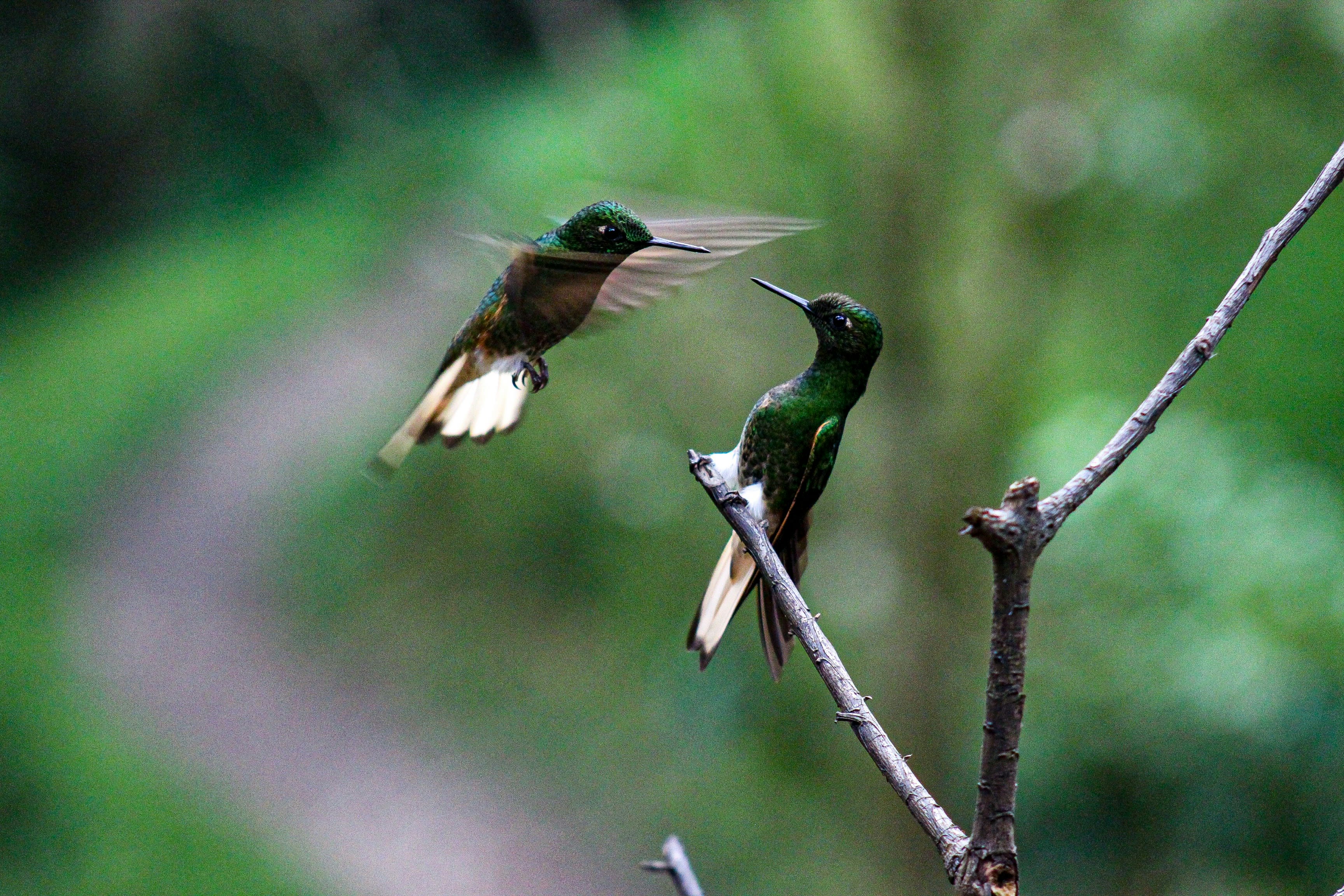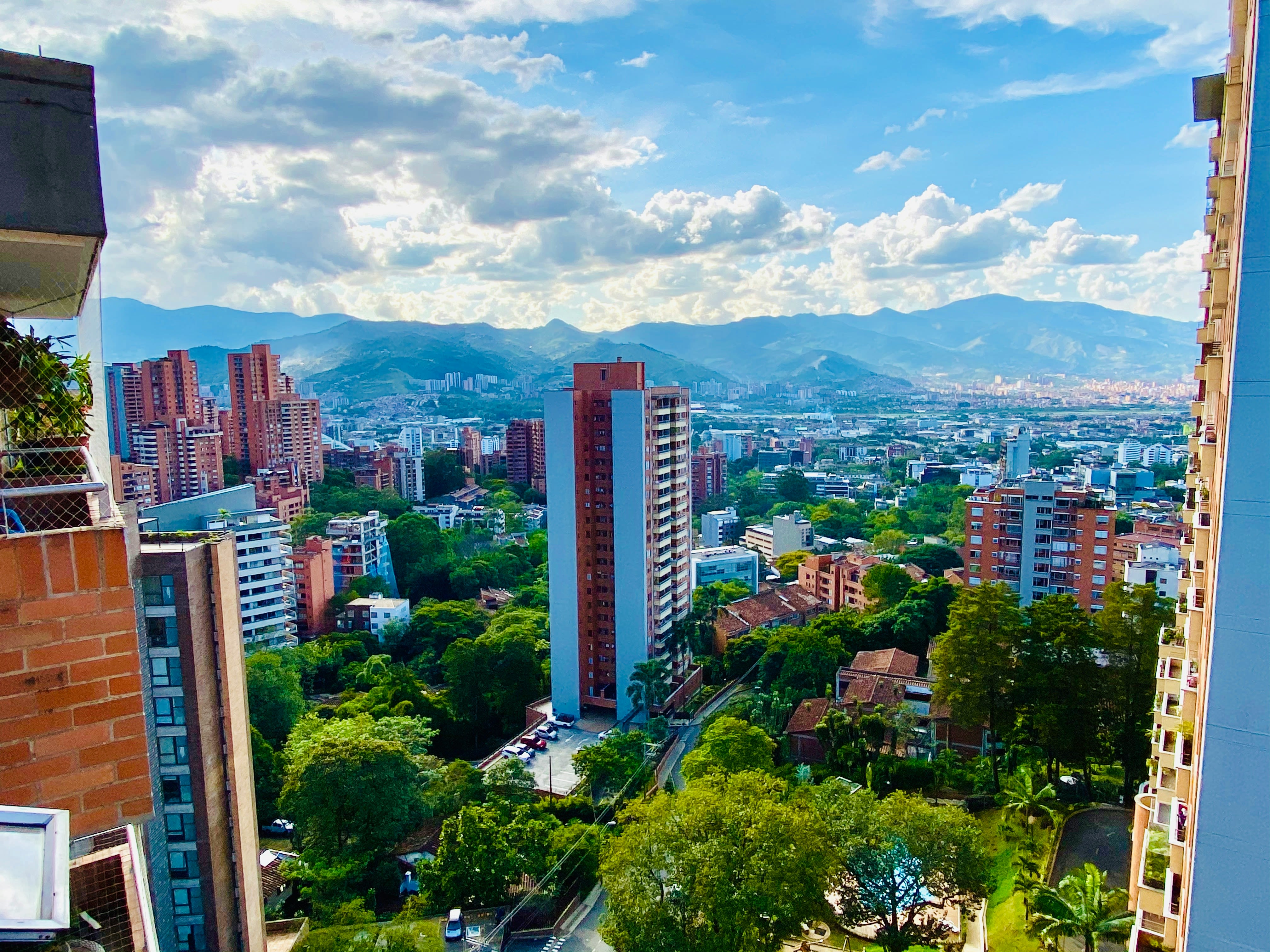Hope and determination for nature
A briefing from COP16 in Cali, Colombia

As government ministers engage in tense final negotiations at the bustling COP16 Global Biodiversity summit in a warm and showery Cali Colombia, the latest news from the natural world is that more than a third of tree species face extinction in the wild, and that environmentally harmful subsidies in agriculture have reached $65 billion a year, directly responsible for 14 percent of deforestation.
But in the waning days before the Friday 1st November finish of the largest biodiversity COP ever, there is also news of positive initiatives to restore and repair nature from right around the world, many of them locally led.
People and Biodiversity

From Cambridge to Cali
I’m here as Executive Director of Cambridge Conservation Initiative (CCI), a unique collaboration between the University of Cambridge and 10 leading internationally focused biodiversity conservation organisations.
We are working with colleagues from across the University of Cambridge to find synergies and amplify partner messages, whilst also participating in and hosting events in beautiful Cali, Colombia, a city nestled between two national parks renowned for the very kind of tropical forest beauty and wildlife under threat.
The surroundings are a poignant reminder of what we are doing here.
Negotiators from across the planet are attempting to secure thriving futures for nature and people amidst the interlocked biodiversity and climate crises. The tussles include a Global North-South divide over financing, a growing row over the benefits of nature’s genetic data and looking at how we can protect vast tracts of the Earth on which billions of people depend.
Following agreement on a Global Biodiversity Framework (GBF) at the Kunming-Montreal COP15 two years ago, this COP is mostly about building momentum to deliver on its goals and 23 targets. Countries are at various stages of updating and submitting their National Biodiversity Strategy Action Plans (NBSAPs). Much of the debate is focused on mechanisms, indicators, and data to ensure robust implementation.
Finance: North-South Divide
A big issue is financing, and how the major gap in resources to deliver on the GBF is to be filled. Tensions are running high, most starkly between Global South countries - who hold so much of the world’s valuable species and habitats and badly need resources for conservation and restoration - and Global North countries whose willingness to contribute to global biodiversity funds is often constrained by fiscal deficits at home.
Amidst tight public finances, a host of private sector funding mechanisms are on the table, yet with major questions about how far these will actually materialise, who and where will benefit, and the feasibility and implications of novel mechanisms such as biodiversity credits.
Will new mechanisms fill gaps, or contribute to a new generation of "green grabs" (the appropriation of nature for ostensibly environmental goals) at the expense of local communities and indigenous peoples? Not surprisingly, questions of governance and justice in nature finance are at the fore, as activist protests outside the negotiating chambers are making clear.
Melissa Leach, CCI Executive Director at COP16 (credit: Isabelle Soskice)
Melissa Leach, CCI Executive Director at COP16 (credit: Isabelle Soskice)
A "Jenga Biodiversity" tower looms over COP16 (credit: Isabelle Soskice)
A "Jenga Biodiversity" tower looms over COP16 (credit: Isabelle Soskice)
COP16 attendees at a session (credit: Isabelle Soskice)
COP16 attendees at a session (credit: Isabelle Soskice)
Nature's genes

Data art installation at COP16 (credit: Isabelle Soskice)
Data art installation at COP16 (credit: Isabelle Soskice)
Photo by Charu Chaturvedi on Unsplash
Photo by Charu Chaturvedi on Unsplash
Photo by Jorge Gardner on Unsplash
Photo by Jorge Gardner on Unsplash
Genetic data
A second area of contention concerns the use of genetic data from nature.
So-called digital sequence information (DSI) is used heavily by makers of drugs and agricultural products who mostly access it for free from public databases. Nations agreed at the last COP15 summit to establish a multilateral fund for “benefit-sharing” from its use.
Yet the details of how companies and other entities will pay into a fund, and how the money will be distributed, are now matters of tense debate involving complex inter-country alliances. Meanwhile large pharmaceutical and agribusiness companies are amongst the industry groups lobbying against the proposals, especially those for a levy on their returns from products made.
30 X 30 targets on land and water
A third key area of debate turns on how the GBF’s ’30 x 30’ area-based targets will be implemented, and who will benefit. Target 2 focuses on restoration and Target 3 on conservation of land, waters and seas, both aiming at 30% by 2030. These will need to be implemented nationally, and will affect billions of people.
Questions turn on fine-tuning criteria and measures for how different kinds of area might contribute (including strictly protected areas, ‘other effective area-based conservation measures' (OECMs), land set aside for rewilding, indigenous territories, and the governance and social implications.
While other GBF Targets ostensibly safeguard local livelihoods and indigenous and local communities’ rights, how far these are integrated into implementation of the 30 x 30 targets remain matters of debate. Again, questions of equity and justice are key.
Indigenous peoples and locals
Meanwhile, important negotiations on proposals to strengthen ‘Article 8J’ – the principal mechanism for the participation of indigenous peoples and local communities in the CBD – by turning it from an ad hoc working group to a formal subsidiary body – are proceeding only slowly amidst struggles over definitions of group identities, including how to recognise Colombian populations who identify as ‘Afro-descendants’.
For all their importance, happenings in the formal negotiating chambers are a relatively invisible part of this COP. It is the largest ever by far, with an estimated 26,000 people participating in an unprecedented mass of side events, meetings and networking right across the sprawling Blue Zone.
More than Montreal and wider mix
The mix is unprecedented too, with the usual array of government, NGO and academic participants sharing the pavilions, stands and walkways with many indigenous peoples and their organisations from Colombia, the wider Latin American region and beyond, and with more than 3,000 business actors – more than three times the number present in Montreal two years ago.
This mix reflects two dominant threads in the mass of side event activity: On ‘nature positive’ business, finance and corporate investment, and on locally led, community and indigenous perspectives, rights and claims. These sometimes appear divided by incommensurable world views and languages, yet surely finding ways to bridge them and establish more equitable dialogue will be essential in the shared efforts to build thriving futures for all life.
Festival atmosphere
Meanwhile, in the heart of the city’s squares and river park is another world again: the Green Zone with its festival atmosphere, local music and crafts, marches and stalls sharing all kinds of nature-related innovations, arts and arguments.
Here the women, men and children of Cali are mixing with international visitors in what feels like a grand public gathering of joy and hope.
Colombia, a country as rich in cultural diversity as in biodiversity, recognises the deep interconnections in the ‘Peace with Nature’ theme for this COP, celebrated effusively in the ‘Nature and Culture’ day but infusing the whole gathering. Nowhere is this clearer than in the Green Zone’s world and wandering in it is an inspiration.
What is Cambridge doing?

Outdoor screening of event at COP16 (credit: Isabelle Soskice)
Outdoor screening of event at COP16 (credit: Isabelle Soskice)
Artist paints a big cat sculpture at COP16 (credit: Isabelle Soskice)
Artist paints a big cat sculpture at COP16 (credit: Isabelle Soskice)
A display of plants and animal photos at COP16 (credit: Isabelle Soskice)
A display of plants and animal photos at COP16 (credit: Isabelle Soskice)
Events and collaborations
Cambridge and its networks have been present and active here, from the work of CCI partner organisations in supporting national delegations, hosting events and launching key reports, to the Cambridge Institute for Sustainability Leadership's (CISL) events with the private sector and the activity of university academics and alumni, such as from the MPhil in Conservation Leadership.
We have been sharing activity through the CCI website and social media, around a set of key themes:
* Linking evidence and action
* Closing the funding gap for nature and biodiversity
* Recognising climate-nature synergies for systemic, lasting change
* Ensuring equity, justice and inclusion for local communities and indigenous peoples
* Inspiring action through our stories of hope and resilience
Central in our collective impact was the side event that CCI, the University of Cambridge Conservation Research Institute (UCCRI) and the Cambridge Institute for Sustainability Leadership hosted on 'Just Transformations for Nature and People: Taking knowledge, evidence and action to scale’.
A large and lively audience heard presentations and shared discussion on how collaboration between academics and practitioners, crossing disciplines and boundaries, can build the impact and leadership needed for real step-changes for nature and people.
As this event illustrated, addressing current biodiversity and climate crises will need practical innovations to be combined with structural economic change, and knowing to be combined with doing, all tempered with strong doses of hope and passion.
These discussions, amidst the atmosphere at this COP, leave me optimistic that the kinds of collaboration we are fostering in Cambridge and with our partners around the world can make a genuine difference.
All images via Unsplash or Isabelle Soskice









